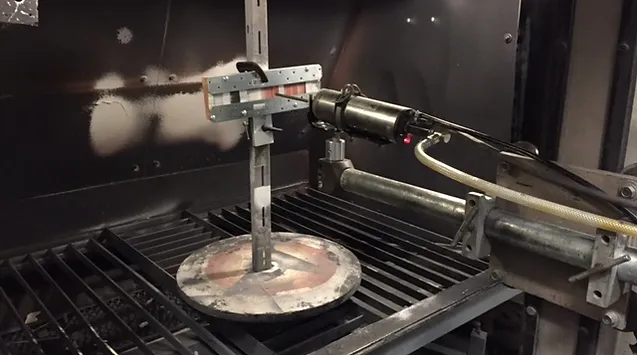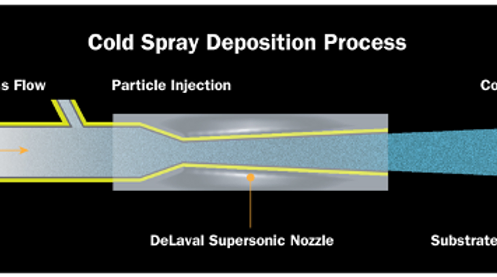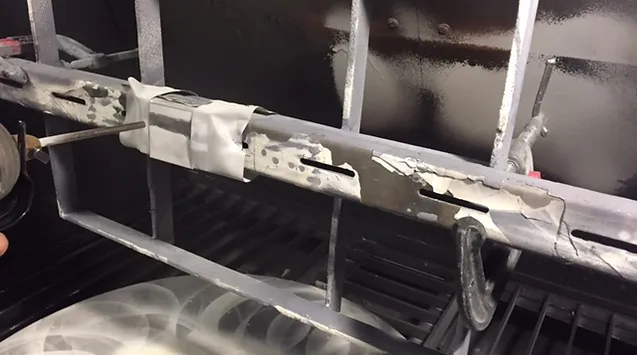Cold Spray Process
Vivid is proud to offer cold spray, an innovative coating application. Cold Spray is a groundbreaking development in the field of high kinetic energy coating procedures. The unique, innovative process involves lower temperatures and an extremely high velocity Cold Spray, which provides many advantages to the substrate of the material being coated.
The cold spray process uses energy from high pressure, compressed gas to propel fine powder particles at extremely high velocities. The Cold Spray consumable gas, which is typically helium, is fed through a heating unit to a specially designed nozzle. Simultaneously, during the Cold Spray process, a similar compressed gas is feeding the powder into the high velocity gas jet. Through this Cold Spray process the particles are accelerated to a specific velocity and temperature where on impact with the substrate they bond to form a coating. The bulk of the reaction on impact has the Cold Spray coating consistently remaining in a solid state. The Cold Spray coating process has limited oxidation, which has many end-user benefits.
Advantages of Cold Spray

- Corrosion Protection
Cold spray dramatically improves product performance due to increased protection against corrosion. The absence of process-induced oxidation in Cold Spray offers improved productivity. Decreasing process-induced oxidation leads to Cold Spray finished electrical conductivity results to be two to four times the conductivity of other spray techniques. - Decreased Porosity
A lower Cold Spray porosity leads to a higher density of the coating. The cold spray coating also shows a low residual tensile stress, which allows a thicker coating to be applied through the cold spray process as compared to other spray processes. The low temperature nature of the cold spray process affects the substrate’s chemistry far less than other coating options, leading to fewer problems with oxidation. - Wide Array of Spray Materials
The Cold Spray process doesn’t change the substrate’s chemistry and leads to a larger variety of materials that can be coated. Cold Spray can be deposited on a wide array of materials, including metals, non-ferrous metals, ceramic, glass, and plastic.





